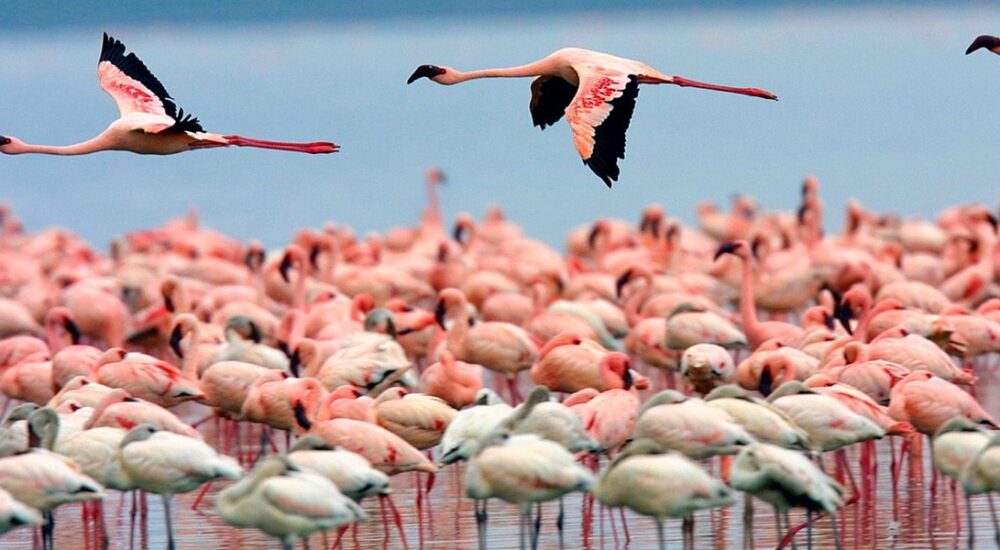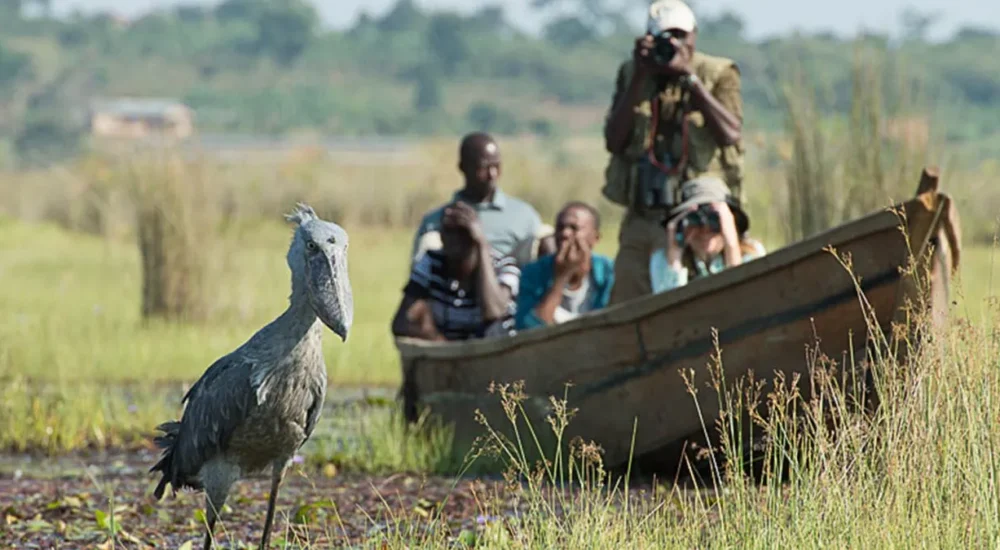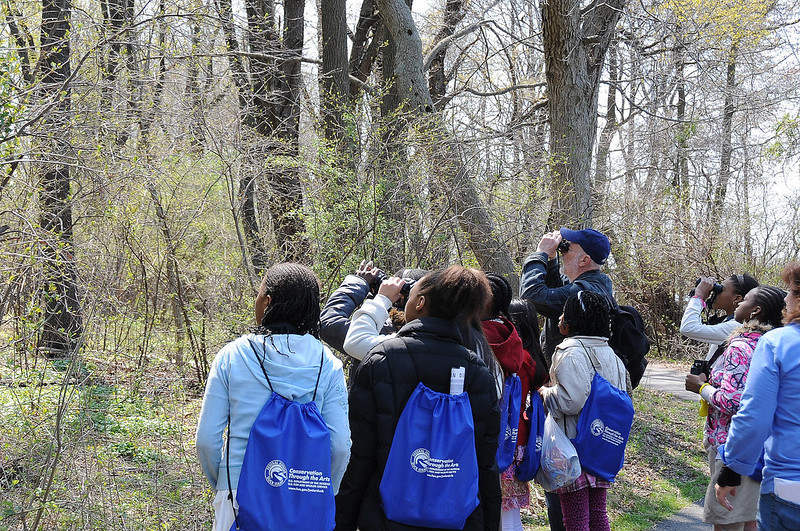Birding in Kenya: A Comprehensive Guide Kenya is renowned for its safaris, particularly for observing…
Mabamba Swamp
Mabamba Swamp, Twelve kilometers west of Entebbe is Mabamba Swamp, which is on the northern shore of Lake Victoria. The Swamp is over 2424 hectares big and has thick beds of papyrus, water lilies, and other swamp grasses. Birdwatchers and people who don’t like birds will both enjoy Mabamba. Over 300 kinds of birds live in the marsh, making it Uganda’s best place to see birds. Mabamba is a very important place for the environment. The Ramsar Convention on Wetlands named Mabamba Swamp a “Wetland of International Importance” in 2006 because it is home to species that are widely threatened.
The Mabamba Swamp
BirdLife International (IBA) tells us that the Mabamba Swamp is an Important Bird Area.
With help from other countries, the Ugandan government has stopped people from entering the swamp and helped promote it as the best place in the country to see birds. In Mabamba Bay Wetlands, Uganda, the government has started community education programs to keep people from entering the swamp and to teach them about how important it is to the ecosystem.
Additionally, they have been urged to make the most of the chances offered by bird tourism in the area. Some fishers have become bird guides because they know every part of the swamp so well. As a result of community education, people who live near the swamp now know what will happen if they destroy the wetland.
They have also welcomed tourists and the chances they bring. People on safari in Uganda often stop in this area to see birds like the blue swallow, yellow warbler, papyrus gonolek, and Shoebill stork, which we will talk about in more detail in a moment. You might also be interested in the other things you can do in Entebbe.
The best way to get to Mabamba Swamp
You can get to the Mabamba Bay Swamp from both Kampala and Entebbe. If you are coming from Entebbe, take the old road that goes from Entebbe to Kampala and split off at Kisubi. One can go to Nakawuka from Kisubi, then Kasanje, and finally Mabamba. People leaving from Kampala can do one of two things.
The first thing you can do is take a cab from the new taxi lot to the Kasanje trading center. Pick up a Boda Boda (motorcycle taxi) at the Kasenje trading area and ride it up to Mabamba, which is 13.5 kilometers away. You can also take the road that goes through Masaka for about 30 kilometers and then turn off to Buyege. Buyege and Mabamba are about 22 kilometers away from each other.
A faster boat ride through Lake Victoria is a better and more direct way to get to the swamp from Entebbe town than the road mentioned above. The lake way is more exciting, and it lets you see Lake Victoria without going through Entebbe town or the airport. It takes 45 to 50 minutes to get from Mabamba to the starting point by speed boat.
You can rent speedboats from the Entebbe sailing club or from a number of hotels in the city. The boats are in great shape, comfy, and come with life jackets. But these big speed boats aren’t right for getting through the grass swamps. When you get close to the Mabamba wetland, you need to get ready to get on smaller boats that are used to get through the papyrus swamps.
When you get to the starting point, you should see a lot of birds. People who work as guides and fishermen are ready to take you deep into the marsh to see birds. Guides for boats and birds are both well-organized. Someone leads them and speaks for them. This speaker pairs visitors with a boatman and a guide. The canoes can only fit three bird watchers, not including the guide and boat driver. First, you have to pay a $7 fee at their small office.
When bought together, the boat and Guide cost around $35. Remember to bring or ask for a life jacket, since many boats don’t have them. The people who own these boats and birding guides are from nearby towns. This is your way of giving back to the community and helping to save the birds and other animals that live in the marsh. When something helps them, people are less likely to destroy it.
On Mabamba Island, there is a Shoebill stork.
One of the most famous birds in Uganda is the Shoebill, which can be found in Mabamba Wetland. Tourists who aren’t interested in birds are also drawn to the Shoebill because of its strange look and huge size. A very rare bird called the Shoebill can only be found in a few places in Uganda. Mabamba Swamp is the best place to see one in Uganda, if not all of Africa.
The Mabamba SwampThe Shoebill loves lungfish, which the natives call “mamba.” There are lots of them in Mabamba Swamp. But local fishers also like to catch lungfish, which puts it in competition with the Shoebill. The fishermen had long thought that seeing a Shoebill (called “Boolwe” in the area) would mean that they wouldn’t catch anything that day.
This is more likely than you might think, though, since the Shoebill eats lungfish and the fish will run away wherever it goes. When hunters went out to fish in the wetland and saw a Shoebill, it was a bad sign. They went after and killed Shoebills, which cut down on their numbers and almost wiped them out here.
In 2006, the Ramsar site did some work to protect the Shoebill. But watching birds in the wetland taught the fishermen and people in the town new things. Birdwatchers pay a lot of money to rent the fishermen’s boats, and some of them have even been trained to help birdwatchers find birds. The fishermen now look out for the Shoebill. If they see one while fishing, they move away from it so as not to bother it, and they are happy to show guests where to find it. About 12 Shoebills are thought to live in Mabamba Wetland.
When to see the Shoebill at its best
Early in the morning, around 7 a.m., is the best time to see the Shoebill in Mabamba swamp, before the wetland gets busy. At this time, the Shoebill is also hunting for lunch fish, which it does by standing still and staring out into the water for hours at a time, waiting for a fish to cross so it can grab it with its big, strong bill that breaks the fish right away.
Other birds seen at Mabamba Swamp
African Green Pigeon, African Jacana, African Marsh Harrier, African Pigmy Goose, African Fish Eagle Black Crake, Black Heron, Black-crowned Night Heron, Black-crowned Waxbill, Black-headed Heron, Black-winged Stilt, Blue Swallow, Blue-cheeked Bee-eater, Common Moorhen, Common Sandpiper, Common Squacco Heron, Double-toothed Barbet, Cattle Egret, Blue Heron, Glossy Ibis, Great Cormorant, Great White Egret, Great White Pelican, Green Cuckoo, Grey Heron, Grey-crowned Crane, The Gull-billed Tern, Black-necked Grebe, Little Egret, Little Stilt, Long-tailed Cormorant, Long-toed Lapwing, Key Birds: Orange Weaver, Marsh Harrier, Malachite Kingfisher, Northern Brown-throated Weather The papyrus Gonolek, The Pink-backed Pelican, the Pied Kingfisher, the Pied Wagtail, the Pin-tailed Whyda, Rare birds like the Purple Heron, the Red-eyed Dove, the Red-headed Lovebird, the Shining Blue Kingfisher, the Speckled Mousebird, the Spur-winged Goose, and the Spur-winged Lapwing Breeds of Weaver Birds: Veilots’ Black Weaver, Village Weaver, Water Thicknee The Winding Cistocola, the Wood Sandpiper, the Woodland Kingfisher, the Yellow-billed Kite, the Black-headed Weaver, and the Yellow-billed Duck are some of the birds that live in this area.
Take a boat ride through the Nile Delta in Murchison Falls National Park to see birds in the Mabamba Swamp.
Seeing birds while the water
People watch birds from a powered wooden canoe or boat in the Mabamba wetland. There are many boats to choose from, and people in the area are eager to take you to see the Shoebill. This bird should be the first thing you look for when you get in the boat. When fishermen go out early in the morning to look for what they got in their nets, they can sometimes tell you where they saw the Shoebill. If not, it will be a game of looking in the fields where the Shoebill likes to hunt.
You can see the Shoebill best in the morning because it stalks lungfish by staying still for hours at a time until a fish that isn’t lucky crosses its path. The Shoebill hides in the grass and spreads its wings to rest when it gets hot later in the day. This makes it hard to find. People have also seen it fly high in the sky to cool off. After watching the Shoebill, go back to normal birding and check out the different waterways that lead to Lake Victoria and further into the swamp, where you will have to wade through thick papyrus and grasses.
The African Marsh Harrier, the African Darter, the Common Squacco Heron, the Purple Heron, the Long-tailed Cormorant, the Northern Brown-throated Weaver, the Yellow-billed Duck, and the Malachite Kingfisher are all water birds that are hard to miss.
Bird watching near the landing site
The Mabamba landing spot and parking area are great places to watch birds before you even get into the wetland. A lot of different birds live in the tall trees, bushes, and thickets. You might see a lifer or a rare bird. You can look at the habitats for a few minutes or an hour before taking the boat trip to see the water paths of the Mabamba wetland.
The beautiful Superb Sunbird has been seen here a lot. It likes to hang out in short trees and bushes and pick insects off of tree branches before running into the everywhere Red-chested Sunbird, which is only found in the Lake Victoria biome.
The Grey-capped Warbler, the Yellow-throated Greeenbul, the Splendid Starling, the Brown-throated Wattle-eye, the Lesser Striped Swallow, the Swamp Flycatcher, and the Yellow-breasted Apalis are some other birds that are often seen.
Seeing birds near the Mabamba Swamp
If you’re going to Mabamba to see birds, the nice walk that goes along the wetland can help you add more species to your list.
When you get back from your boat trip on Mabamba Swamp, take this road that starts on your left just before the exit. Along the swamp, the path goes through farms and bushland, and then it goes past a small planting of eucalyptus trees that can hide some interesting forest animals. You can walk for two hours or until you’re tired because the trail is pretty long.
Other things to do and see in Uganda’s Mabamba Swamp: Fishing
There is clear water in Lake Victoria that flows through the Mabamba Bay swamp, which is made up of muddy water, grass, and reeds. There are fishing chances in this area because it has both clear water and muddy wetlands. It’s also important to note that fishing is the main source of income in the area. Lungfish, tilapia, Nile perch, and mudfish are the fish that are taken the most. Two of these fish, tilapia and Nile perch, are very popular around the world because they taste so good.
Reports of seeing Sitatunga
Of Sitatunga’s last refuge in Uganda, the Mabamba Wetlands Sanctuary is one of them. The sitatunga, which is also called the swamp antelope, is a shy animal that is hard to find. They are almost always found by themselves and almost never with other people. You might catch a glimpse of one moving among the papyrus reeds if you’re lucky. The environment of sitatungas is being destroyed, and they are being hunted or poached for their meat. The Uganda Wildlife Authority is working hard to stop hunting and protect the last place where these amazing animals can live.
Walks through the village and stops at craft shops
Outside of the Mabamba swamp is a town or slum with fishing stands. It is both educational and humbling to take a walk of the nearby villages. You will be able to talk to the fishers, their families, and other people who live in the area. After seeing the villages, you can buy souvenirs at the artist shops that have been set up just outside the wetland. You can buy things like baskets, mats, huts, shoes, stools, and bags made from papyrus or reeds.
Canoeing
A lot of the time, canoes are used for fishing and birdwatching tours around the wetlands, but an adventurous tourist can rent one just to do some exploring. The fisherman will take you to Lake Victoria by boat through the huge swamp.
This is where you can stay at Mabamba Nkima Forest Lodge:
The Nkima Forest Lodge is the only good place to stay near Mabamba right now. The camp is nice and in the middle of the Nkima forest. It has views of the Mabamba wetland and Lake Victoria in the distance.
The bar, restaurant, and library are all in the main house, which is on top of the hill and has a lovely view of the forest.
The lodge has eight cabins that are spread out down the hill in different parts of the forest. The cabins have their own bathrooms, are fully equipped, and are located away from other buildings. They have a deck where you can sit and enjoy the view of the forest. From the safety of your lodge, you can see monkeys swinging by, as well as squirrels, birds, and other animals that live in the forest.
At the resort, there is also a deck up high near the forest canopy where you can relax and watch birds and monkeys. In the distance, you can see Lake Victoria through the trees.
For wildlife lovers, this is a nice place to get away near Entebbe. People who want to start birding in Uganda should stay at this camp near Entebbe. From there, you can easily start birding in Mabamba and Nkima Forests.


